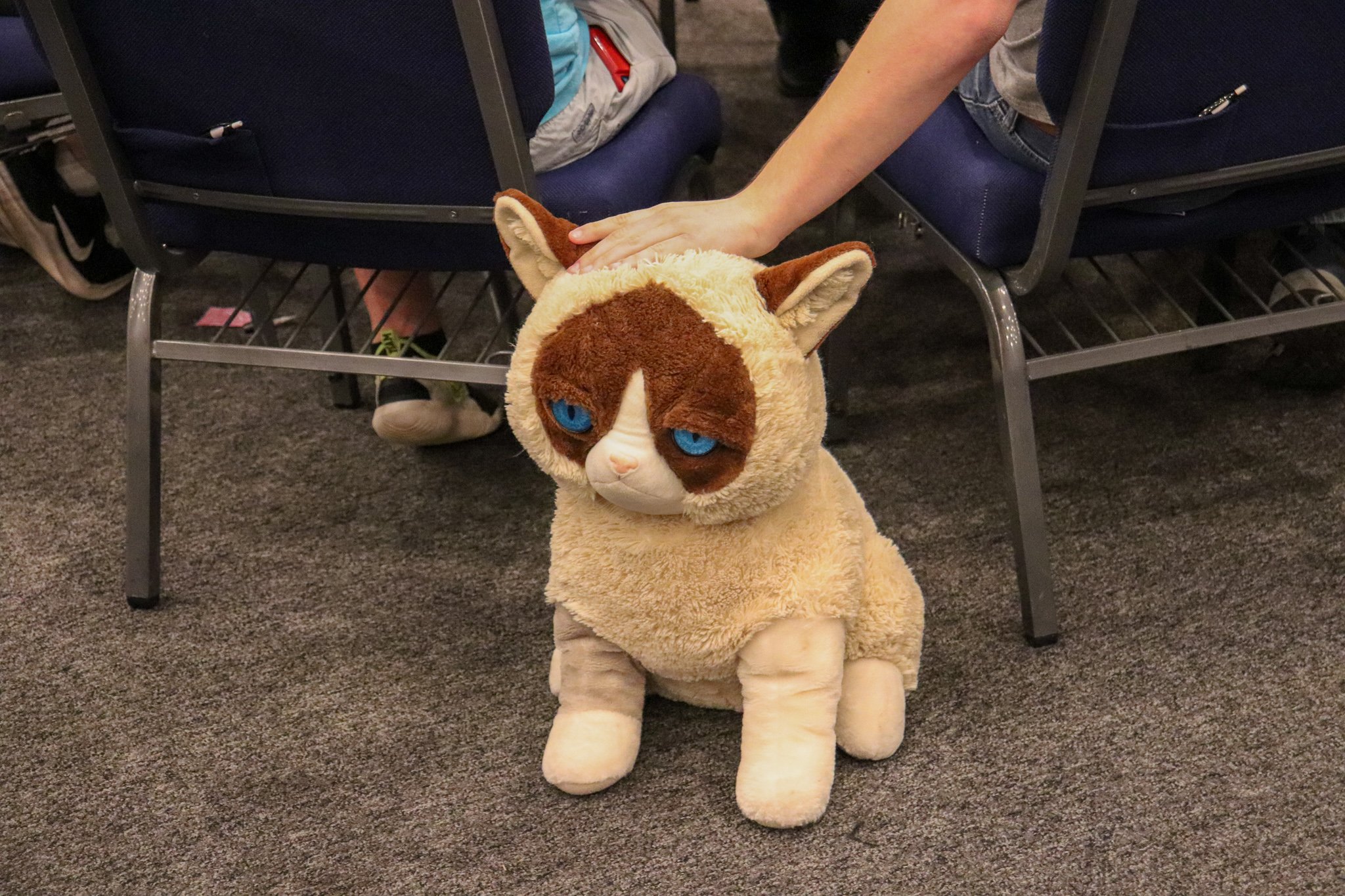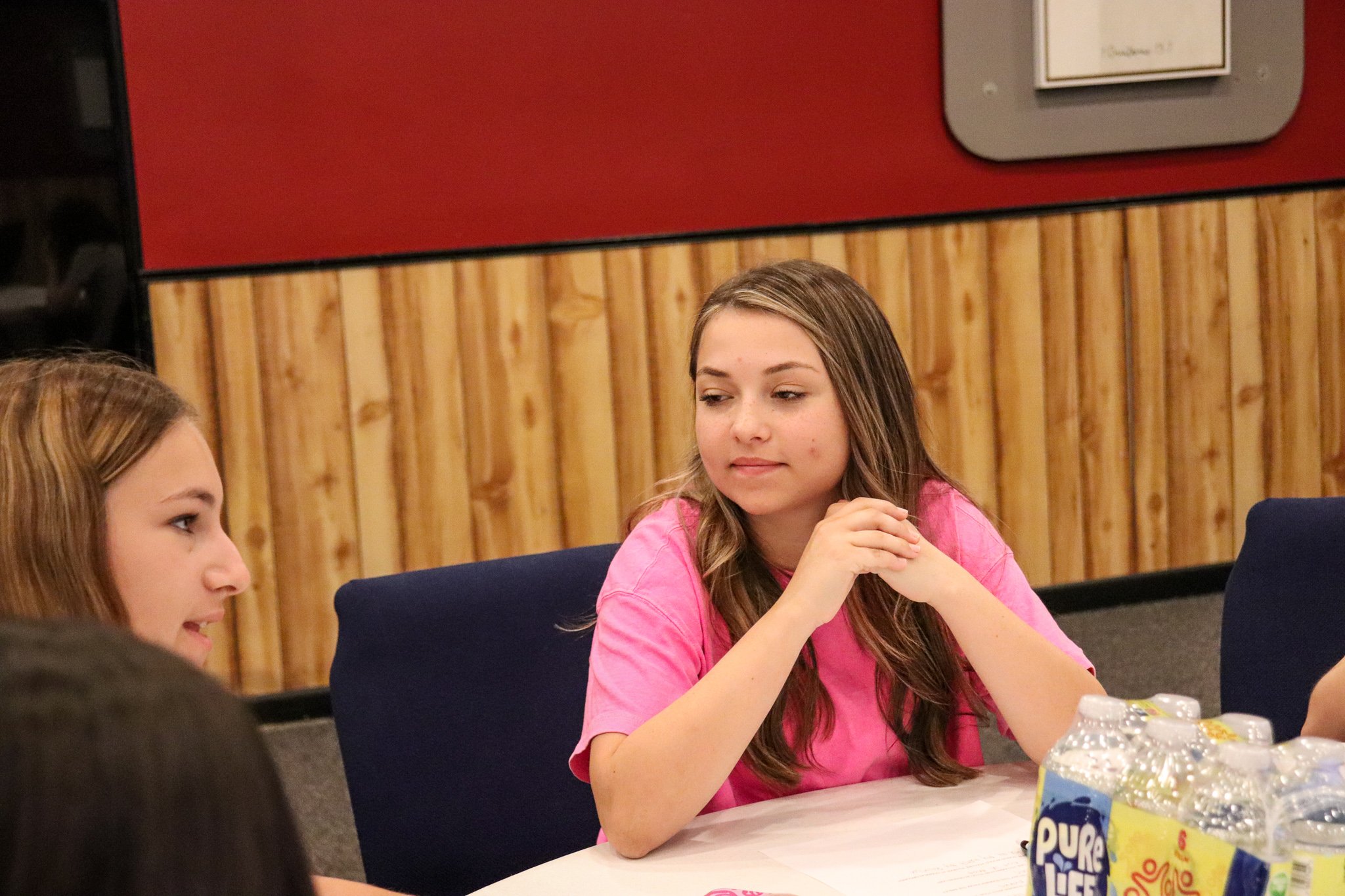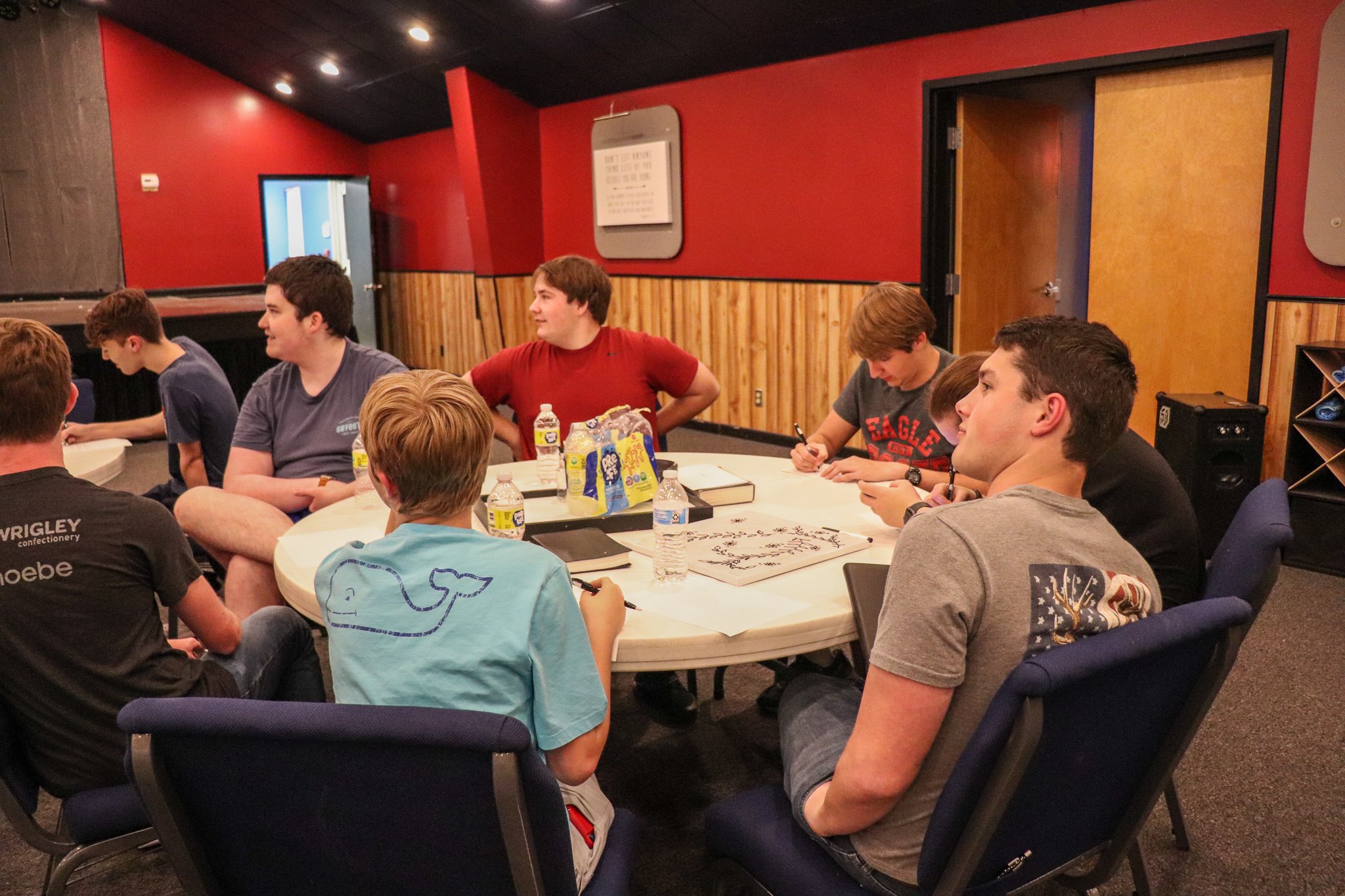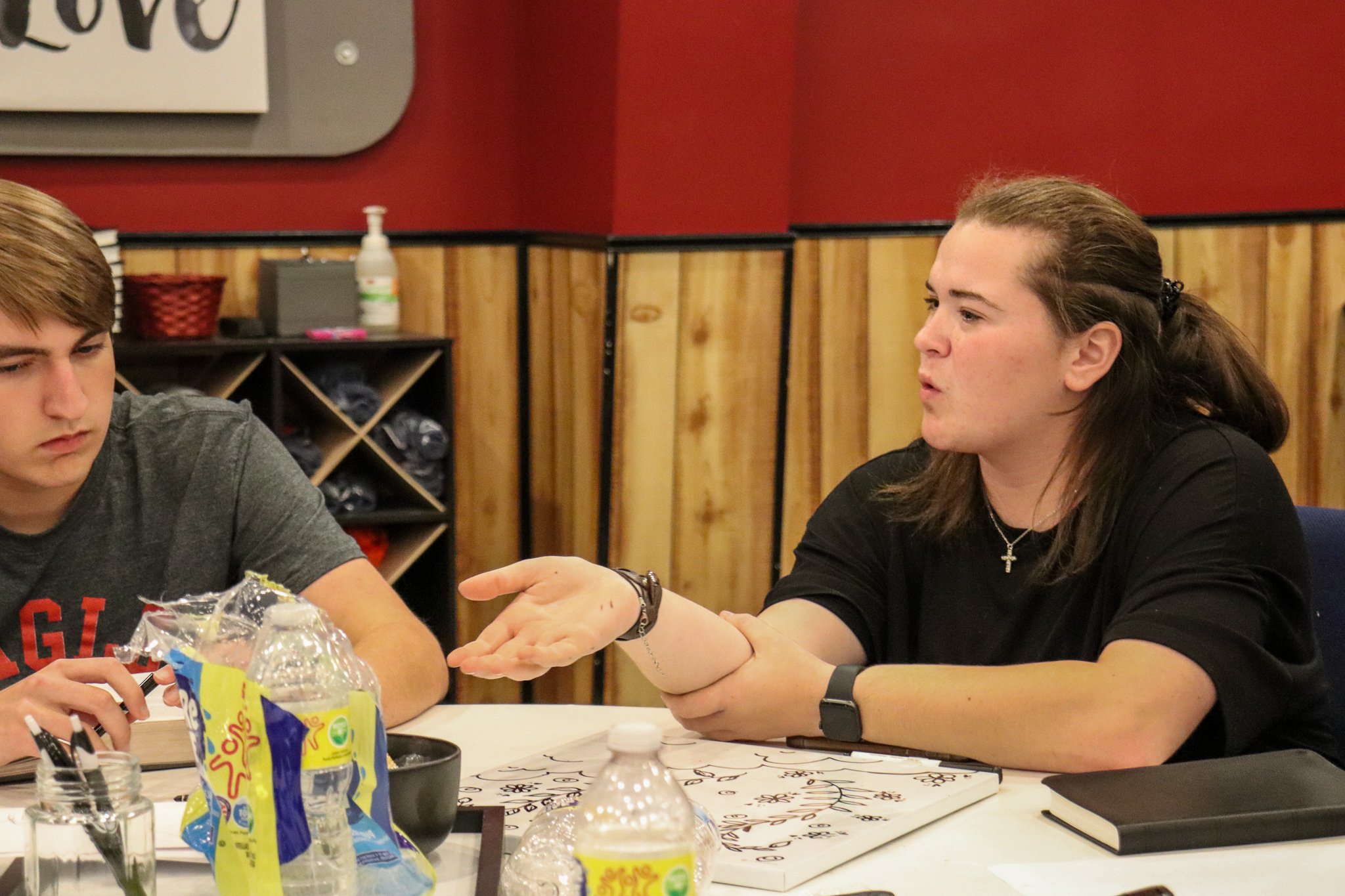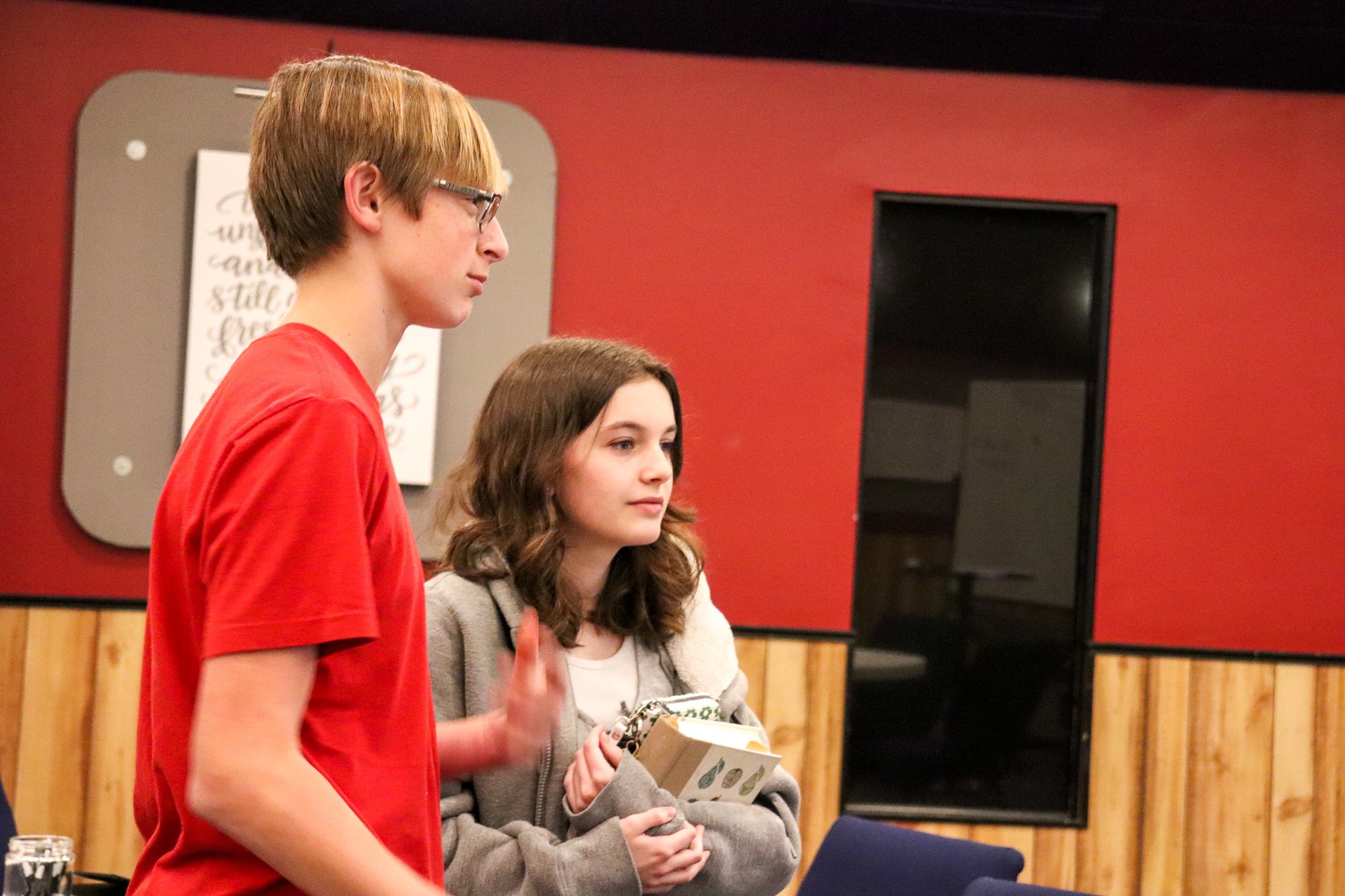“It allows a wonderful balance of student discussion and teaching and it does a good job of creating a casual, but serious atmosphere.”
A New Common Ground format.
Youth ministry is often times experimental in nature. Teenagers, by design, are quite adventurous and welcome new things. Recently, we began testing a new format for Common Ground. While the front-end of the service remains the same with student-led, contemporary worship, the study aspect has changed significantly. We have switched from a sermonic, pulpit-oration to a socratic, dialogue format. Students no longer sit in lines, but in circles; they have moved from rows to around tables.
Why would we make such a change?
Several reasons. Teenagers are in (what a Classicist would call) the rhetoric stage of their academic development. This means that they are ready to discuss and debate the concepts and information that they have mastered. They are eager to test the connections they have made along the way. With this in mind, the socratic format challenges them to participate and engage the scripture, theological ideas, cultural relevance and personal application head-on. Finally, we believe this makes the information most sticky (memorable) following the session—which is exactly what we want. Dialogue helps to form critical thinkers who can articulate ideas winsomely.
What do students think?
The feedback we have received from our students has been overwhelmingly positive. In a recent survey, one student wrote, that the new format “allows a wonderful balance of student discussion and teaching and it does a good job of creating a casual, but serious atmosphere.” Others responded that they favored the new socratic method, “cause there is more connectedness,” and “more involvement;” “you have to be active.” It is rewarding to see students excited about learning and taking ownership in the study. Our young people are incredibly intelligent, insightful, and contribute well to the discussion.
Bryan Haynes
PC: photos by Amy Haynes


